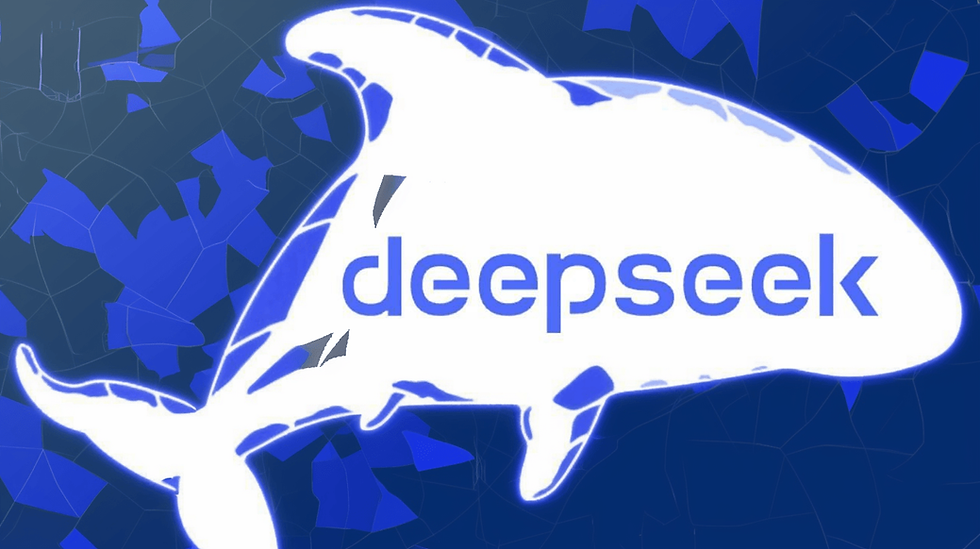The AI Race Heats Up: What Deep Seek’s Rise Means for the Tech Industry
- Revanth Reddy Tondapu
- Jan 28
- 3 min read

In a surprising turn of events, the release of Deep Seek AI by a Chinese company has sent ripples through the tech industry, marking a significant shift in the global AI landscape. This development serves as a wake-up call for industries worldwide, emphasizing the need to remain competitive and innovate rapidly.
Deep Seek: A Game-Changer in AI Technology
Deep Seek has quickly become the top trending app, even surpassing some of the most popular AI models in just a few days. This rapid rise has had profound effects on the tech sector, notably causing a significant drop in Nvidia's market cap. The key to Deep Seek's success lies in its ability to run locally, thanks to advancements in AI technology that allow for efficient deployment on consumer hardware.
Understanding the Impact of Deep Seek’s Release
Deep Seek's emergence highlights a few critical trends in the AI sector:
Cost-Effective AI Models: Deep Seek was developed with a budget significantly lower than its competitors, yet it offers comparable performance. This demonstrates that high-quality AI can be achieved without massive financial investments, paving the way for more democratized AI development.
Open Source Advantage: The open-source nature of Deep Seek allows developers and users to run models on their hardware, ensuring data privacy and customization. This transparency and flexibility are critical in building trust and fostering innovation.
Global Competition: The rise of Deep Seek underscores the growing competition from Chinese AI companies, challenging US counterparts and pushing the boundaries of AI research and development.
Running Deep Seek Locally: A Quick Guide
For those interested in leveraging Deep Seek's capabilities, here's a simplified explanation of how you can run it locally:
Hardware Requirements: To run Deep Seek efficiently, you need a robust setup, such as high-performance GPUs or powerful CPUs. The model has been optimized to run on consumer-grade hardware, making it accessible to more users.
Quantization Techniques: Deep Seek employs dynamic quantization to reduce the model size and computational requirements while maintaining performance. This involves adjusting the precision of model parameters, allowing it to run effectively on lower-spec hardware.
Installation and Setup: While specific installation instructions depend on your hardware and operating system, the general process involves downloading the model, setting up the necessary software dependencies, and configuring your system to utilize the model efficiently.
The Future of AI and Data Privacy
While Deep Seek offers impressive capabilities, it also raises concerns about data privacy, especially since it originates from a Chinese company. Users must weigh the benefits of using such models against potential privacy risks. The open-source nature of Deep Seek provides some reassurance, as it allows users to maintain control over their data.
Using Janus Pro
To get started with Janus Pro, you can access the model's code and instructions on GitHub. The model's weights are available on platforms like Hugging Face, making it easy to download and integrate into your projects. Whether you want to run it locally on your computer or through an online interface, the process is straightforward.
Example Use Case
Imagine you have an image of a landmark and want to know more about it. With Janus Pro, you can upload the image, and the model will provide a detailed description, recognizing key features and offering contextual information. Additionally, if you want to generate an image, simply provide a text prompt, and Janus Pro will create a stunning visual representation based on your input.
Here's a simple way to implement Janus Pro using Python and Gradio, a user-friendly interface for running machine learning models:
import gradio as gr
from janus_pro import JanusProModel
# Initialize the model
model = JanusProModel()
def process_image(image):
# Use the model to describe the image
description = model.describe_image(image)
return description
# Create a Gradio interface
iface = gr.Interface(fn=process_image, inputs="image", outputs="text", title="Janus Pro Image Description")
# Launch the interface
iface.launch()
This example sets up a basic web app where you can upload an image and receive a textual description generated by Janus Pro.
Conclusion
The release of Deep Seek marks a pivotal moment in AI development, showcasing the potential for cost-effective, high-performance models. As the AI landscape continues to evolve, companies must prioritize innovation, collaboration, and transparency to stay competitive. By leveraging open-source models like Deep Seek, developers and businesses can push the boundaries of what's possible, driving the next wave of technological advancement.
Stay tuned for more updates on AI developments and how they shape our world. If you have any questions or topics you'd like to explore, feel free to reach out.
Comments